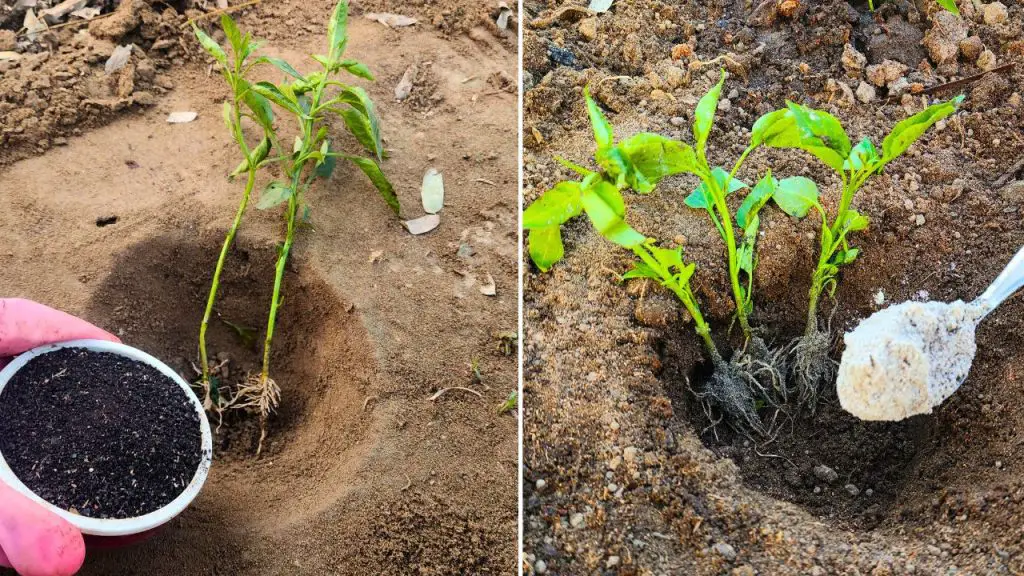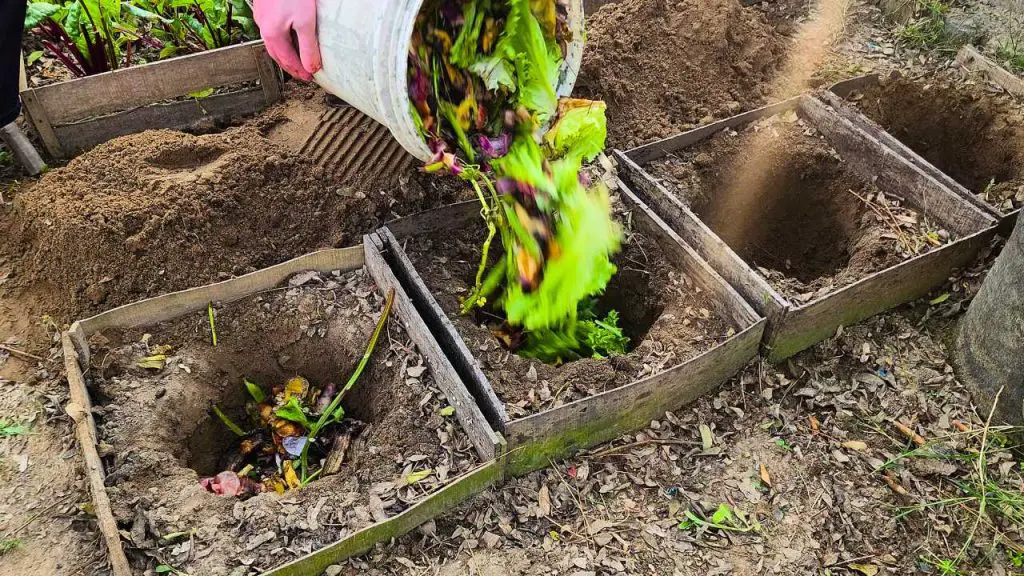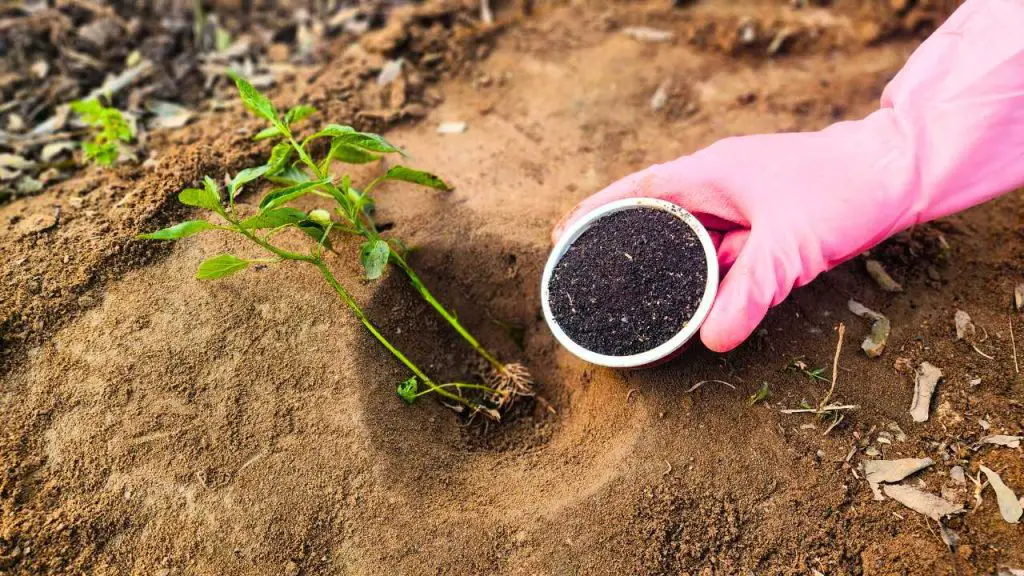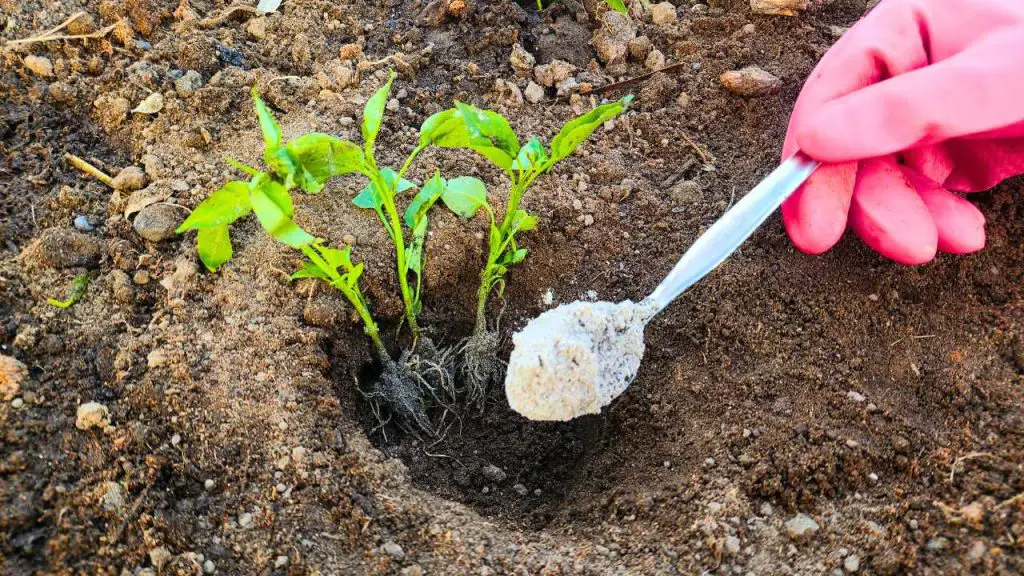Peppers and chilies are wonderful crops to grow in your home garden, but they do need a little extra attention when it comes to soil preparation. These plants are sensitive to their environment, especially in the early stages. If you give them the right nutrients from the beginning, they will reward you with stronger growth, more flowers, and bigger, tastier fruits.

One of the best ways to ensure this success is by preparing the planting hole properly before you place your seedling or plant into the ground. The right mix of organic materials and natural fertilizers can completely change how your peppers grow. In this article, we’ll explore three powerful things you can add to the planting hole that will help your pepper and chili plants grow faster, stronger, and healthier.
Number One: Kitchen Waste and Worm Castings
The first powerful addition to the planting hole is a mix of uncooked kitchen waste and worm castings. Let’s talk about kitchen waste first. Most of us throw away vegetable scraps like carrot peels, onion skins, or the ends of cucumbers and tomatoes. But these are not garbage—they are gold for your garden.

When you bury them in the planting hole, they slowly break down and feed the soil. This process not only gives your pepper plant nutrients but also attracts beneficial soil microbes that help the plant grow better. The waste breaks down over time and creates a rich, living environment right where your plant needs it most: near the roots.
Now let’s add worm castings. Worm castings are the waste that worms leave behind after they eat compost. This might sound unpleasant, but it’s one of the most powerful fertilizers in the gardening world. It’s full of nutrients like nitrogen, phosphorus, and potassium—everything a young pepper plant needs.
Worm castings also help the soil hold moisture without becoming soggy, which is perfect because peppers need consistent watering but don’t like wet feet. When you combine kitchen waste with worm castings, you’re giving your pepper plant a powerful natural boost. You’re improving the structure of the soil, increasing microbial life, and giving your plant a long-term source of food. That’s why this mix comes in at number one.
Number Two: Blood Meal
Next on our list is blood meal. This may sound unusual if you’re new to gardening, but it’s a common and natural product used by experienced growers. Blood meal is made from dried animal blood, usually from cattle. It’s packed with nitrogen, which is one of the three main nutrients plants need to grow.

Peppers and chilies especially need nitrogen in the early stages when they are building their leaves and stems. A small amount of blood meal in the planting hole gives your plant a slow-release source of nitrogen. That means it will continue feeding the plant over time, helping it grow healthy, dark green leaves and strong stems.
A strong plant in the early stages is more likely to survive disease, pests, and weather changes. However, it’s important not to overdo it. Too much nitrogen can cause the plant to grow lots of leaves but not many fruits. That’s why just a little bit in the planting hole is enough.
This method is safer and more effective than spraying liquid nitrogen fertilizers after planting. Blood meal is also helpful for increasing soil acidity slightly, which is great because peppers prefer a slightly acidic soil environment.
It also helps improve the soil’s structure by supporting healthy bacteria, which makes nutrients more available to the plant. Using blood meal is a simple but powerful way to make sure your pepper and chili plants have the nutrients they need to grow big and strong from the start.
Number Three: Mixing Compost and Wood Ash
The final secret to a healthy planting hole is a mix of compost and wood ash. Compost is one of the most important tools in any gardener’s toolbox. It improves soil texture, adds nutrients, and helps the soil hold the right amount of moisture. Compost also contains beneficial microbes that support root development and protect the plant from harmful diseases.

When compost is added to the planting hole, it creates the perfect environment for root growth. The plant can quickly send out new roots, grab the nutrients it needs, and settle in comfortably. Healthy roots lead to healthy plants, and healthy plants produce more chilies and peppers.
Now let’s talk about wood ash. Wood ash is the grey, powdery material left behind after burning wood. It’s rich in potassium and calcium, which are two important nutrients for fruiting plants like peppers. Potassium helps the plant develop flowers and fruits, while calcium supports strong cell walls and helps prevent problems like blossom end rot.
Wood ash also has an alkaline effect, which can help balance soil that’s too acidic. If your garden soil is naturally on the acidic side, adding a small amount of wood ash to the planting hole can bring the pH closer to the neutral range, which peppers and chilies love. Mixing compost with wood ash gives you the best of both worlds.
You get the slow-release nutrition and microbial support of compost, plus the mineral-rich benefits of wood ash. Just make sure not to use too much ash, as too much can make the soil too alkaline. A light sprinkle mixed in with the compost is enough to do the job. When used correctly, this combination builds a strong base that supports your pepper plant throughout its growing season.
